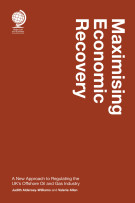The 10 most important changes to European Union Trade Mark law
16 June 2016

Author bio coming soon

Author bio coming soon
In our latest blog, Mark Holah and Patricia Collis, co-authors of our forthcoming title on 'The European Union Trade Mark', discuss the significant changes to EUTM law.
European Union Trade Mark law: 10 key changes you should know about
On 23 March 2016 Regulation (EU) No. 2015/2424 entered into force, and with it the most significant changes to EUTM law since the unitary EU-wide trade mark system was introduced back in 1996.
Here we outline the 10 most important changes that all companies should be aware of:
1. Name Changes: the name of the unitary EU-wide trade mark has changed from the Community Trade Mark (CTM) to the European Union Trade mark (EUTM). In addition, the name of the EUTM Registry has changed from the Office of Harmonisation in the Internal Market (OHIM) to the European Intellectual Property Office (EUIPO).
2. Fee Changes: There have been changes to the fee structure for both application and renewal fees. The previous system whereby the basic fee covered up to three classes of goods/services has been replaced by a pay-per-class system, with the amounts being the same for both applications and renewals, as follows:
• One class: €850
• Two classes: €900
• Each class above two: €150 per class
3. Graphic Representation Requirement: From 1 October 2017 the need for a mark to be graphically represented will be replaced with a requirement for “clarity and precision” in what is protected. In theory this should make is easier to protect non-traditional trade marks, such as sounds and smells. However, the grounds on which an application can be refused have been expanded. An EUTM application can now be refused where a mark consists of characteristics which result from the nature of the goods, which are necessary to obtain a technical result, or which add substantial value to the goods. These changes are likely to limit the effects of the removal of the graphic representation requirement.
4. Specifications: These are now interpreted in accordance with the literal meaning of the words used, irrespective of when the application was originally filed. Under previous practice, all EUTM applications covering the entire “class heading” of the Nice Classification for any class of goods/services were deemed to cover all the goods/services in the full alphabetical list for that class. As the change means that some trade mark owners will lose protection, there is a six month sunrise period, ending on 24 September 2016, during which such parties can file a declaration indicating that they had intended to cover the full alphabetical list at the time of filing.
5. Certification Marks: The new Regulation provides for EU-wide certification marks. It will not be possible to file applications for such marks until 1 October 2017, and full details of how this system will work are not yet available.
6. Counterfeits Travelling through the EU: The new Regulation allows the owners of EUTM rights to seize counterfeit goods that are travelling through the EU, even if the goods are not intended for the EU market. However, an alleged infringer will have a defence if they can show that there would be no trade mark infringement in the country to which the goods are destined.
7. Infringing Acts: The following acts are now clearly listed in the new Regulation as acts of trade mark infringement:
• Use of a trading name or company name;
• Various preparatory acts, including applying a trade mark to packaging or labels;
• Use in comparative advertising.
8. Defences to Infringement: The two main changes in this regard are the abolition of the “own name” defence for companies, and the expansion of the “descriptive indications” defence so that defendants using non-distinctive terms that are included within a registered trade mark now have the possibility of raising a defence to infringement.
9. Intervening Rights: Rights which were obtained between the filing of an allegedly infringed mark and the acts of infringement have been given increased protection, and it is now more difficult to attack such rights on the basis of unused older rights.
10. Opposition Changes: The key changes to EUTM opposition proceedings are as follows:
• Opposition can be filed against an EUTM application on the basis of protected designations of origin or geographical indications;
• The relevant date for proof of use in EUTM opposition proceedings is the date of application of the opposed application, rather than the date of publication;
• The opposition period for EU designations under the International Trade Mark system now begins one month after republication by the EUIPO, rather than the previous six months.
Click here for further details and a free sample chapter of our new title: 'The European Union Trade Mark'.













Any comments - send us an email